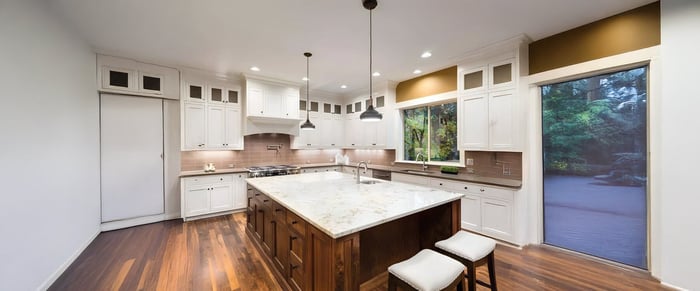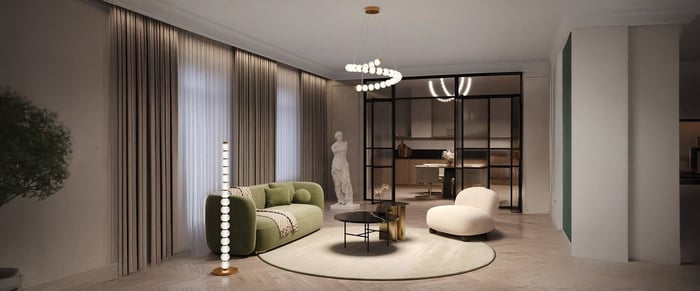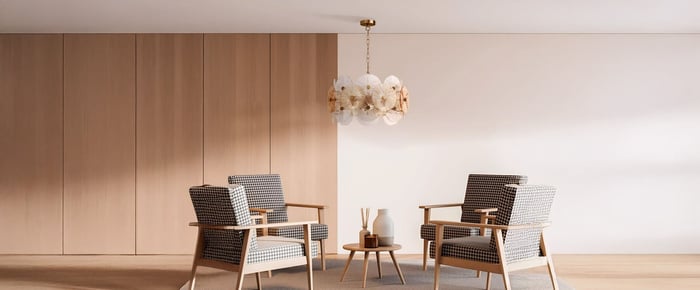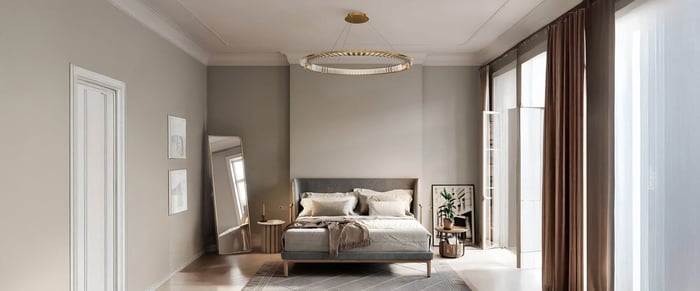Introduction
The kitchen is more than just a place to cook - it’s the heart of the home, a multifunctional space where families gather, meals are prepared, and memories are made. While good kitchen design focuses on layout and functionality, the right kitchen lights are equally crucial in making your kitchen a welcoming, efficient, and stylish space. Proper kitchen lights transform what could be an ordinary room into a bright and versatile environment, balancing both style and function. This requires a thoughtful approach, combining different light sources to create a perfect blend of general, task, and accent lighting.
Achieving optimal lighting in a kitchen isn’t about choosing just one type of fixture. Instead, it involves layering various light elements to address every part of the room. From pendant lights above islands to LED strip lights illuminating cabinets, using the right mix ensures every corner is both functional and visually appealing.
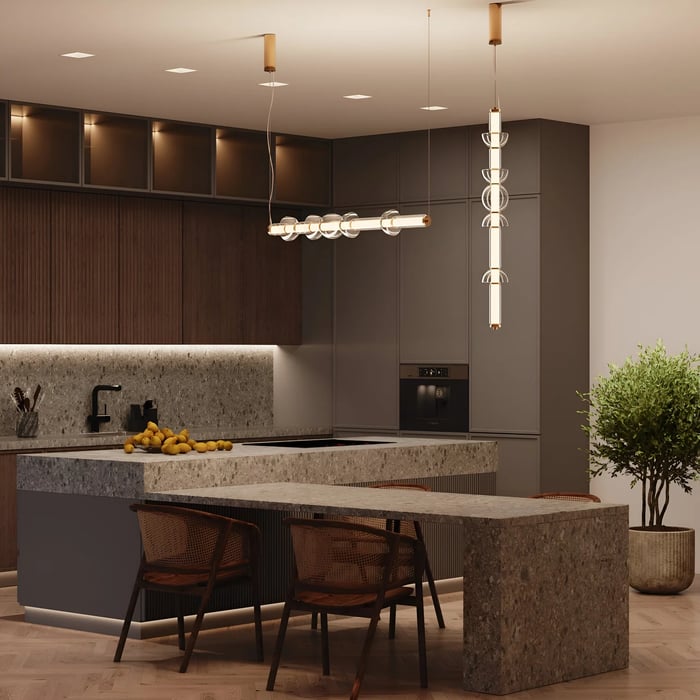
Here are ten essential lighting rules that every modern kitchen needs to create that perfect glow:
Rule 1: Layer Your Lighting
Creating the perfect kitchen lights requires a layered approach. Layering means combining different types of lighting, such as ambient, task, and accent lights, to achieve a harmonious blend of brightness throughout the room. Start with general illumination provided by Kitchen Ceiling Lights or recessed Downlights, which offer even light distribution across the entire space. Ambient lighting ensures you have a bright base, but it needs to be complemented by more focused light sources. For example, Cabinet Lighting or LED Strip Lights installed beneath cabinets provide targeted brightness for countertops and preparation areas, eliminating harsh shadows. Kitchen Pendant Lights suspended above islands serve as task lighting, enhancing visibility where you need it most.
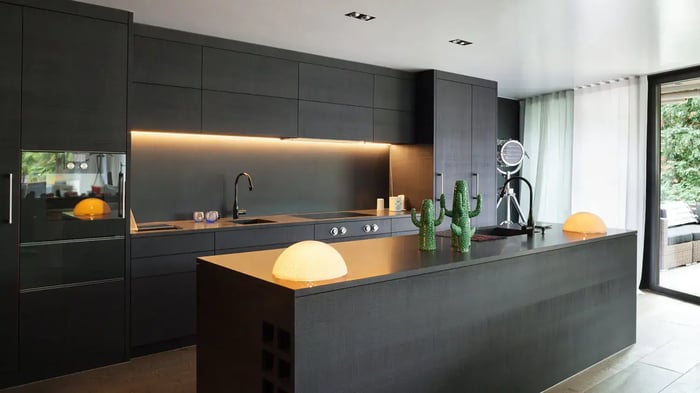
Rule 2: Focus on Task Lighting
Task lighting is critical in the kitchen for activities like chopping vegetables, cooking, and reading recipes. Kitchen lights provide an essential layer of brightness that enhances visibility and functionality. This focused lighting minimizes eye strain and makes meal preparation easier and safer. Consider installing Kitchen Pendant Lights directly over your island or food prep areas for maximum effect. Spotlights can also be directed at specific work zones like the sink or stove, providing extra clarity during detailed tasks. When choosing task lighting, opt for fixtures that direct light downward, ensuring your countertops are well-lit without casting unnecessary shadows.
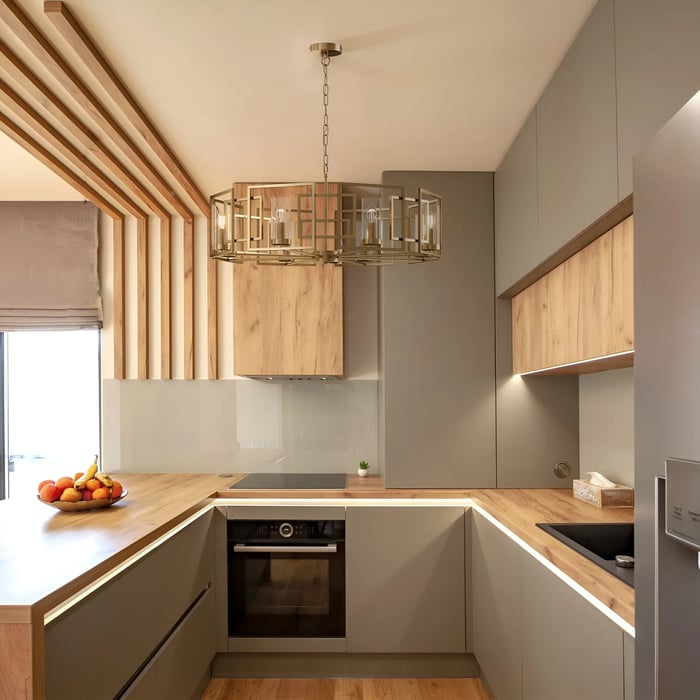
Rule 3: Accent Your Style with Chandeliers
Kitchen Chandeliers add elegance and become a visual centrepiece, setting the tone for the room's overall aesthetic. These decorative light fixtures not only provide ambient light but also infuse your space with character. When selecting a chandelier for your kitchen, consider its style and size relative to your space. For a modern look, opt for minimalist chandeliers with clean lines. Alternatively, ornate or vintage-inspired chandeliers add charm to traditional settings. Hanging a chandelier over the dining area or in the centre of the kitchen makes a statement while tying the room's design together.
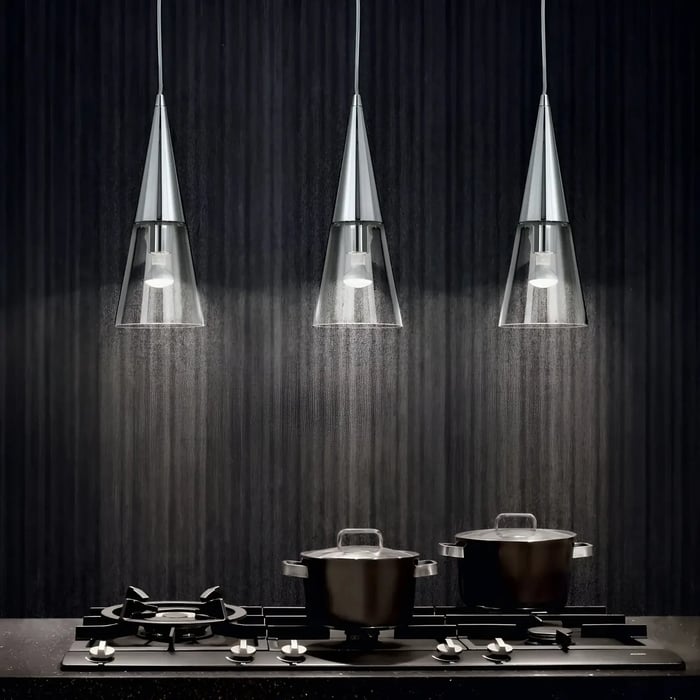
Rule 4: Consider Strategic Placement
Where you place your light fixtures can make or break your kitchen light scheme. Evenly spaced Kitchen Ceiling Lights ensure consistent general lighting, while Cabinet Lighting positioned under cabinets prevents shadows on your work surfaces. Kitchen Pendant Lights should be hung at the right height - typically 30 to 36 inches above countertops or islands - to avoid glare while maintaining visual appeal. Meanwhile, accent lighting, such as Spotlights, should highlight key features like a stylish backsplash, open shelving, or a decorative hood vent.
Rule 5: Use LED Options for Energy Efficiency
Energy-efficient LED lighting options are ideal for modern kitchens. LED Strip Lights, Downlights, and other fixtures provide bright, consistent illumination while using significantly less energy compared to traditional incandescent or halogen bulbs. LEDs have a longer lifespan, reducing the need for frequent replacements. Kitchen lights featuring LED technology also come in various colour temperatures, allowing you to customize your kitchen’s ambiance based on your preferences, from warm and inviting tones to cool and crisp lighting. With kitchen lights that incorporate LED solutions, you can achieve a high-performance, eco-friendly kitchen setup that cuts down on utility costs.
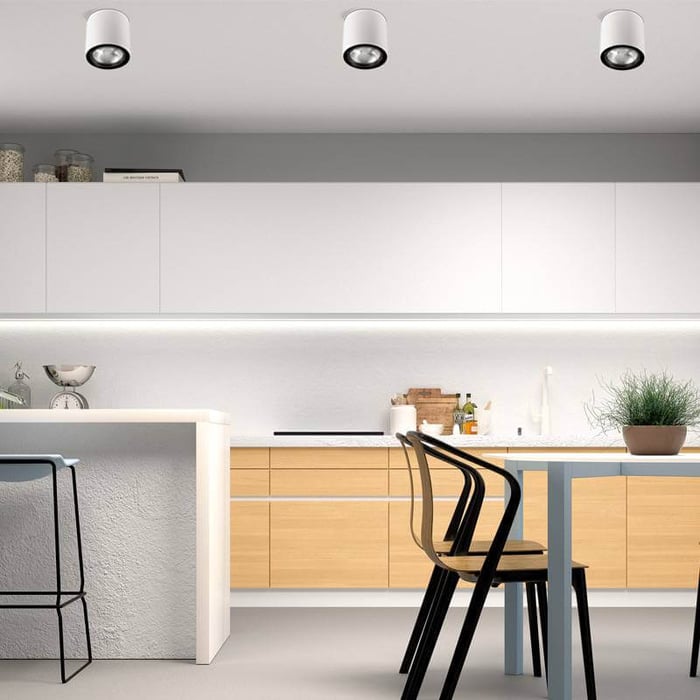
Rule 6: Highlight Architectural Details
Spotlights and accent lighting bring attention to the architectural features and unique design elements within your kitchen. Whether you want to showcase a decorative tile backsplash, highlight intricate cabinetry, or accentuate open shelving, the right lighting draws the eye and creates depth. Strategically placed Spotlights or Downlights emphasize these features, making your kitchen more visually dynamic and engaging. This rule works particularly well for homeowners who want to create a sense of luxury and personalization in their space.
Rule 7: Make the Most of Dimmers
Lighting needs can vary throughout the day. Dimmers offer the flexibility to adjust the brightness of your Kitchen Ceiling Lights, Kitchen Pendant Lights, and other fixtures. You can create a soft, ambient glow for relaxed evening gatherings or brighten the room for busy mornings when everyone is on the go. Adding dimmers provides greater control over the kitchen lights, adapting the brightness to different occasions and tasks.
Rule 8: Choose Appropriate Fixtures for Each Area
Different parts of the kitchen serve different purposes, and your lighting choices should reflect this. Kitchen Island Lighting may involve a mix of Kitchen Pendant Lights and recessed Downlights to ensure optimal brightness for meal prep or casual dining. Cabinet Lighting, on the other hand, is designed to illuminate countertops and make everyday tasks more manageable. By choosing fixtures that serve their intended purposes, you’ll enhance both functionality and aesthetics.
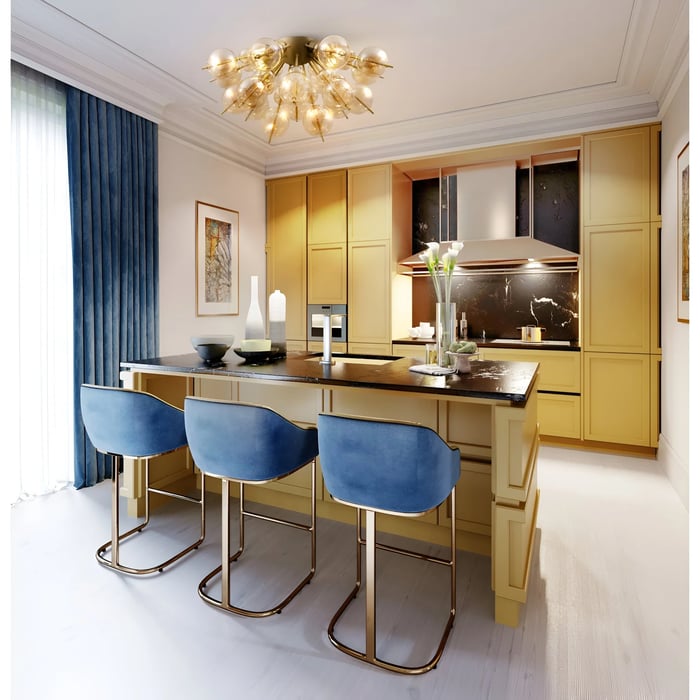
Rule 9: Match Fixtures with Your Decor
Your lighting fixtures should complement your kitchen’s overall decor. Consider using finishes and designs that blend with the rest of your appliances, cabinets, and furniture. For instance, metallic Kitchen Chandeliers can tie in beautifully with stainless steel appliances, while modern LED Strip Lights, Kitchen Lights, or minimalist Spotlights work well in contemporary or industrial-styled kitchens. Ensuring your kitchen lights fit the design theme creates a cohesive, polished look that elevates the entire space.
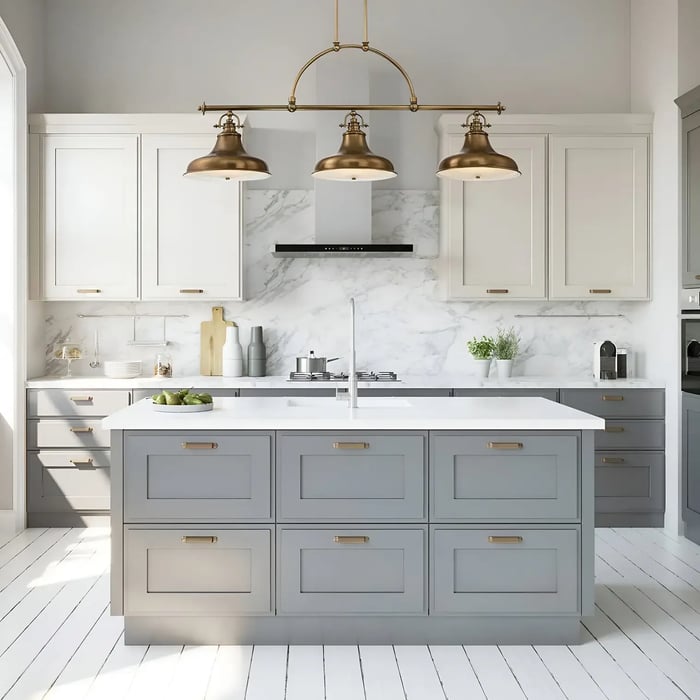
Rule 10: Blend Functionality with Design
The ideal kitchen lights plan combines functionality with visual appeal. Every fixture, from cabinet lights to kitchen island lights, should contribute to a bright, attractive space that supports your daily activities. Kitchen lights can transform the atmosphere, offering practical solutions while enhancing the aesthetic charm of the room. Consider how each element interacts to create a seamless, cohesive whole that meets your needs while enhancing the overall atmosphere. By experimenting with different fixtures, you can find the perfect blend of form and function, ensuring your kitchen is both practical and beautiful.
Conclusion
Achieving the perfect glow in your kitchen requires a thoughtful combination of different lighting elements. By following these ten rules, you can transform your kitchen into a bright, functional, and aesthetically pleasing space that suits your needs and style. From layering lighting and using task lights like Kitchen Pendant Lights to strategically placing Spotlights, Kitchen Lights, and energy-efficient LED Strip Lights, every decision plays a role in creating a warm, inviting atmosphere. With the right kitchen light plan, your kitchen becomes more than a workspace - it becomes a true centrepiece of the home, ready for any occasion.
